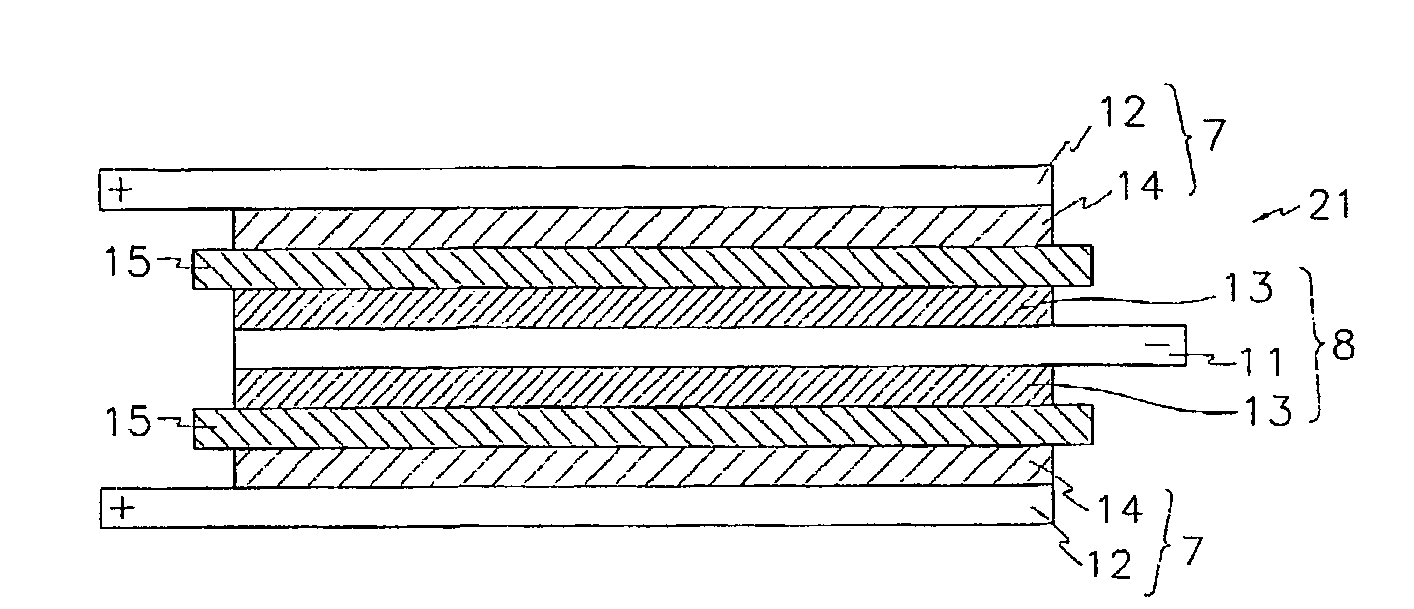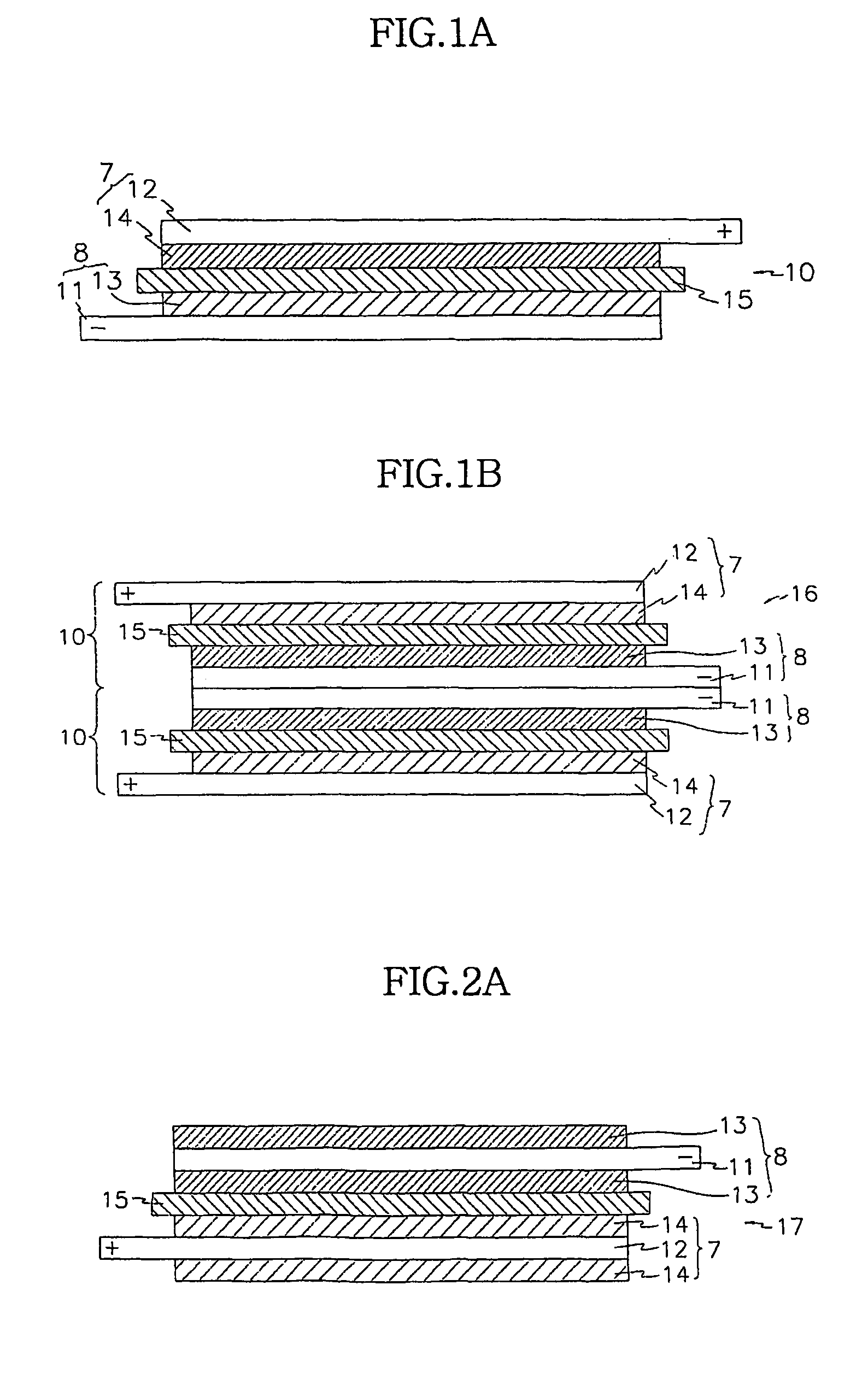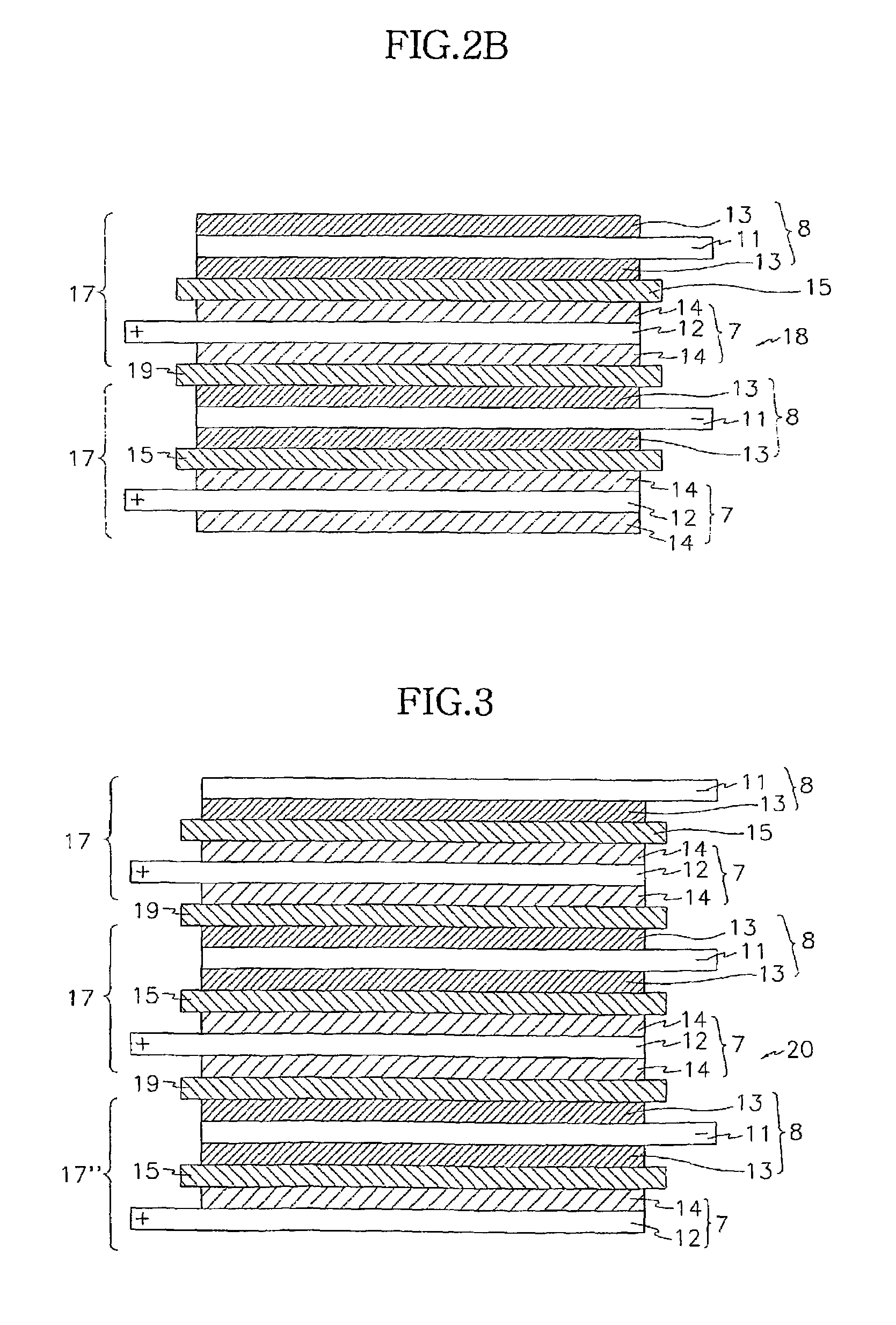Electrochemical device using multicomponent composite membrane film
a composite membrane film and electronic device technology, applied in the field of electronic elements, can solve the problems of lithium ion polymer batteries lithium ion compounds that are difficult to manufacture, and batteries that are flammable and explosive, and achieve good ionic conductivity and mechanical properties, good adhesion, and easy manufacturing
- Summary
- Abstract
- Description
- Claims
- Application Information
AI Technical Summary
Benefits of technology
Problems solved by technology
Method used
Image
Examples
example 1
Preparing a Stacked Cell where a Fuel Cell is a Basic Unit
[0116](Preparing Positive Electrodes)
[0117]LiCoO2, carbon black, and PVDF, of which the weight ratio was 95:2.5:2.5, were dispersed in 1-methyl-2-pyrrolidone (NMP) in order to prepare a slurry. The slurry was then coated on aluminum foil on both sides of the aluminum foil. After sufficiently drying at 130° C.; the positive electrodes were prepared by pressing. The thickness of the positive electrode was 115 μm.
[0118](Preparing an Negative Electrode)
[0119]Graphite: acetylene black: PVDF, of which the weight ratio was 93:1:6, were dispersed in NMP in order to prepare a slurry The slurry was then coated on a copper foil on both sides of the copper. After sufficiently drying at 130° C., the negative electrodes were prepared by pressing. The thickness of the negative electrode was 120 μm.
[0120](Preparing a Multi-Component Composite Film)
[0121]A high crystalline polypropylene was used for a material of a precursor film. It had a me...
example 2
Preparing a Stacked Cell where a Bicell is a Basic Unit
[0138](Preparing a Positive Electrode)
[0139]Each positive electrode was prepared according to the same method as in the above Example 1.
[0140]A positive electrode of the bicell that was to be placed in the inner side was prepared by coating the slurry on both sides of aluminum foil. That is, the positive electrode has a positive active material coated on both sides of the aluminum positive current collector. The thickness of the positive electrodes was 140 μm.
[0141](Preparing an Negative Electrode)
[0142]Each negative electrode was prepared was prepared according to the same method as in the above Example 1.
[0143]Negative electrodes that were to be placed in the outermost sides of the outermost fuel cells were prepared by coating the slurry and on both sides of copper negative current collectors, and negative electrodes that were to be placed in the inner side were prepared by coating the slurry on both sides of copper negative c...
PUM
| Property | Measurement | Unit |
|---|---|---|
| thickness | aaaaa | aaaaa |
| thickness | aaaaa | aaaaa |
| thickness | aaaaa | aaaaa |
Abstract
Description
Claims
Application Information
 Login to View More
Login to View More - R&D
- Intellectual Property
- Life Sciences
- Materials
- Tech Scout
- Unparalleled Data Quality
- Higher Quality Content
- 60% Fewer Hallucinations
Browse by: Latest US Patents, China's latest patents, Technical Efficacy Thesaurus, Application Domain, Technology Topic, Popular Technical Reports.
© 2025 PatSnap. All rights reserved.Legal|Privacy policy|Modern Slavery Act Transparency Statement|Sitemap|About US| Contact US: help@patsnap.com



